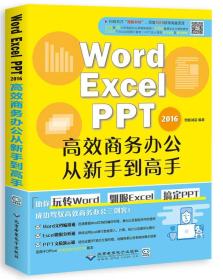
计算机组织与设计硬件/软件接口
¥ 31.59 5.4折 ¥ 58 九五品
仅1件
河北廊坊
认证卖家担保交易快速发货售后保障
作者亨尼丝
出版社机械工业出版社
出版时间2004-10
版次1
装帧平装
货号A7
上书时间2024-12-08
- 在售商品 暂无
- 平均发货时间 13小时
- 好评率 暂无
- 最新上架
商品详情
- 品相描述:九五品
图书标准信息
- 作者 亨尼丝
- 出版社 机械工业出版社
- 出版时间 2004-10
- 版次 1
- ISBN 9787111074373
- 定价 58.00元
- 装帧 平装
- 开本 其他
- 纸张 胶版纸
- 页数 759页
- 【内容简介】
-
John L. Hennessy & David A. Patterson: Computer Organization & Design, The Hardware/Software interface. Second Edition.
Copyright @ 1998 by Morgan Kaufmann Publishers, Inc.
Harcourt Asia Pte Ltd under special arrangement with Morgan Kaufmann authorizes China Machine Press to print and exclusively distribute this edition, which is the only authorized complete and unabridged reproduction of the latest American Edition published and priced for sale in China only, not including Hong Kong SAR and Taiwan.
Unauthorized export of this edition is a violation of the Copyright Act. Violation of this Law is subjected to Civil and Criminal penalties. - 【目录】
-
Foreword
Worked Examples
Computer Organization and Design Oniline
Preface
CHAPTERS
1 Computer Abstractions and Technology
1.1 Introduction
1.2 Below Your Program
1.3 Under the Covers
1.4 Integrated Circuits:Fueling Innovation
1.5 Real Stuff:Manufacturing Pentium Chips
1.6 Fallacies and Pitfalls
1.7 Concluding Remarks
1.8 Historical Perspective and Further Reading
1.9 Key Terms
1.10 Exercises
2 The Role of Performance
2.1 Introduction
2.2 Measuring Performance
2.3 Relating the Metrics
2.4 Choosing Programs to Evaluate Performance
2.5 Comparing and Summarizing Performance
2.6 Real Stuff:The SPEC95 Benchmarks and Performance of Recent Processors
2.7 Fallacies and Pitfalls
2.8 Concluding Remarks
2.9 Historical Perspective and Further Reading
2.10 Key Terms
2.11 Exercises
3 Instructions:Language of the Machine
3.1 Introduction
3.2 Operations of the Computer Hardware
3.3 Operands of the Computer Hardware
3.4 Representing Instructions in the Computer
3.5 Instructions for Making Decisions
3.6 Supporting Procedures in Computer Hardware
3.7 Beyond Numbers
3.8 Other Styles of MIPS Addressing
3.9 Starting a Program
3.10 An Example to Put It All Together
3.11 Arrays versus Pointers
3.12 Real Stuff: PowerPC and 80x86 Instructions
3.13 Fallacies and Pitfalls
3.14 Concluding Remarks
3.15 Historical Perspective and Further Reading
3.16 Key Terms
3.17 Exercises
4 Arithmetic for Computers
4.1 Introduction
4.2 Signed and Unsigned Numbers
4.3 Addition and Subtraction
4.4 Logical Operations
4.5 Constructing an Arithmetic Logic Unit
4.6 Multiplication
4.7 Division
4.8 Floating Point
4.9 Real Stuff: Floating Point in the PowerPC and SOx86
4.10 Fallacies and Pitfalls
4.11 Concluding Remarks
4.12 Historical Perspective and Further Reading
4.13 Key Terms
4.14 Exercises
5 The Processor: Datapath and Control
5.1 Introduction
5.2 Building a Datapath
5.3 A Simple Implementation Scheme
5.4 A Multicycle Implementation
5.5 Microprogramming:Simplifying Control Design
5.6 Exceptions
5.7 Real Stuff:The Pentium Pro Implementation
5.8 Fallacies and Pitfalls
5.9 Concluding Remarks
5.10 Historical Perspective and Further Reading
5.11 Key Terms
5.12 Exercises
6 Enhancing Performance with Pipelinling
6.1 An Overview of Pipelining
6.2 A Pipelined Datapath
6.3 Pipelined Control
6.4 Data Hazards and Forwarding
6.5 Data Hazards and Stalls
6.6 Branch Hazards
6.7 Exceptions
6.8 Superscalar and Dynamic Pipelining
6.9 Real Stuff: PowerPC 604 and Pentium Pro Pipelines
6.10 Fallacies and Pitfalls
6.11 Concluding Remarks
6.12 Historical Perspective and Further Reading
6.13 Key Terms
6.14 Exercises
7 Large and Fast:Exploiting Memory Hierarchy
7.1 Introduction
7.2 The Basics of Caches
7.3 Measuring and Improving Cache Performance
7.4 Virtual Memory
7.5 A Common Framework for Memory Hierarchies
7.6 Real Stuff:The Pentium Pro and PowerPC 604 Memory Hierarchies
7.7 Fallacies and Pitfalls
7.8 Concluding Remarks
7.9 Historical Perspective and Further Reading
7.10 Key Terms
7.11 Exercises
8 Interfacing Processors and Peripherals
8.1 Introduction
8.2 I/O Performance Measures:Some Examples from Disk and File Systems
8.3 Types and Characteristics of I/O Devices
8.4 Buses:Connecting I/O Devices to Processor and Memory
8.5 Interfacing I/O Devices to the Memory, Processor, and Operating System
8.6 Designing an I/O System
8.7 Real Stuff: A Typical Desktop I/O System
8.8 Fallacies and Pitfalls
8.9 Concluding Remarks
8.10 Historical Perspective and Further Reading
8.11 Key Terms
8.12 Exercises
9 Multiprocessors
9.1 Introduction
9.2 Programming Multiprocessors
9.3 Multiprocessors Connected by a Single Bus
9.4 Multiprocessors Connected by a Network
9.5 Clusters
9.6 Network Topologies
9.7 Real Stuff: Future Directions for Multiprocessors
9.8 Fallacies and Pitfalls
9.9 Concluding Remarks-Evolution versus Revolution In Computer Architecture
9.10 Historical Perspective and Further Reading
9.11 Key Terms
9.12 Exercises
APPENDICES
A Assemblers, Linkers, and the SPIM Simulator
A.1 Introduction
A.2 Assemblers
A.3 Linkers
A.4 Loading
A.5 Memory Usage
A.6 Procedure Call Convention
A.7 Exceptions and Interrupts
A.8 Input and Output
A.9 SPIM
A.10 MIPS R2000 Assembly Language
A.11 Concluding Remarks
A.12 Key Terms
A.13 Exercises
B The Basics of Logic Design
B.1 Introduction
B.2 Gates, Turth Tables, and Logic Equation
B.3 Combinational Logic
B.4 Clocks
B.5 Memory Elements
B.6 Flnite State Machines
B.7 Timing Methodologles
B.8 Concluding Remarks
B.9 Key Terms
B.10 Exercises
C Mapping Control to Hardware
C.1 Introduction
C.2 Implementing Combinational Control Units
C.3 Implementing Finite State Machine Control
C.4 Implementing the Next-State Function with a Sequencer
C.5 Translating a Microprogram to Hardware
C.6 Concluding Remarks
C.7 Key Terms
C.8 Exercises
Glossary
Index
点击展开
点击收起
— 没有更多了 —












以下为对购买帮助不大的评价